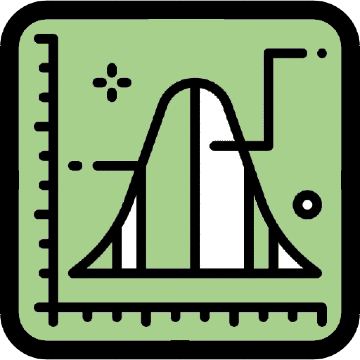MAT-00.DPS  MAT-00.DPS MAT-00.DPS Domain  | (DPS) Data Probability and Statistics Learners will ask and answer questions by collecting, organizing, and displaying
relevant data, drawing inferences and conclusions and making predictions; and understanding and applying basic concepts of probability.
|
Sub-Categories- (D) Data
Learners will represent and interpret data. - (DA) Data Analysis
Learners will ask and answer questions by collecting, organizing, and displaying relevant data, drawing inferences and conclusions, and making predictions. - (P) Probability
Learners will understand and apply basic concepts of probability.
Calculation Method for DomainsDomains are larger groups of related standards. The Domain Grade is a calculation of all the related standards. Click on the standard name below each Domain to access the learning targets and rubrics/ proficiency scales
for individual standards within the domain. |
|
MAT-00.DPS.D.01

|
Kindergarten (MAT) Targeted Standard
(DPS) Data Probability and Statistics
(D) Data
Learners will represent and interpret data.
|
MAT-00.DPS.D.01 Sort and classify objects (up to 10) based on attributes and explain the reasoning used.*
 Proficiency Scale Proficiency Scale
Progressions
Data Collection
- MAT-00.DPS.D.01 Sort and classify objects (up to 10) based on attributes and explain the reasoning used.
- MAT-01.DPS.D.01 Collect, organize and represent data with up to three categories using picture and bar graphs.
- MAT-02.DPS.D.01 Formulate questions and collect, organize, and represent data, with up to four categories using single unit scaled pictures and bar graphs.
- MAT-03.DPS.D.01 Formulate questions to collect, organize, and represent data with more than four categories using scaled pictures and bar graphs.
- MAT-04.DPS.D.01 Formulate questions to collect, organize, and represent data to reason with math and across disciplines.
- MAT-06.DPS.DA.01 Write a statistical question that can be answered using measures of center or variability of a data set.
- MAT-07.DPS.DA.01 Identify the strengths and weaknesses of a population sample, including possible bias in the process of the data collection.
- MAT-12.DPS.06 Use data from a sample survey to estimate a population means or proportion; develop a margin of error through the use of simulation models for random sampling.
- MAT-12.DPS.09 Recognize the purposes of and differences among sample surveys, experiments, and observational studies; explain how randomization relates to each.
|
|


